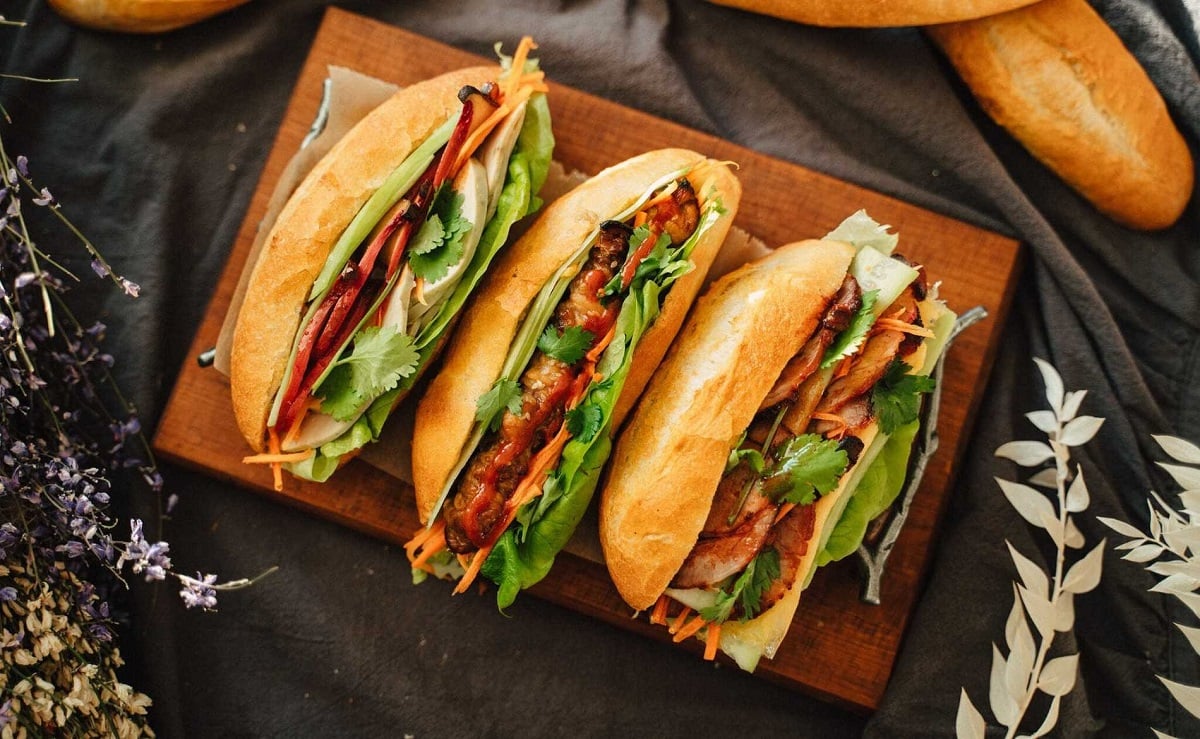Banh Mi, the beloved Vietnamese sandwich, is a culinary masterpiece that perfectly encapsulates the diverse flavors and cultural influences of Vietnam. This delectable creation is a product of the country’s rich history, which has seen the fusion of indigenous ingredients with foreign influences. The name “Banh Mi” itself is a testament to this blending, with “banh” referring to bread introduced by the French during their colonial rule, and “mi” meaning wheat, highlighting its connection to the foreign wheat-based baguette. The result is a delightful and harmonious combination of textures and tastes, making Banh Mi a ubiquitous street food enjoyed by locals and tourists alike.
At the heart of every Banh Mi is the crusty French baguette, providing the sandwich with its signature crunch. This bread is airy and light on the inside, creating a perfect contrast to the various fillings that grace its interior. Traditionally, the fillings include succulent slices of grilled pork or other meats, along with fresh vegetables such as cucumber, cilantro, and pickled daikon and carrots. A smear of mayonnaise and a dash of soy sauce or fish sauce add a creamy and umami-rich layer to the ensemble. But what truly sets Banh Mi apart is the addition of fiery chili peppers or a dollop of pungent and fermented fish paste, providing a fiery kick that awakens the palate. The balance of textures, flavors, and temperatures is nothing short of a gastronomic revelation.
The history of Banh Mi stretches back to the French colonial era, which began in the mid-19th century and lasted until the mid-20th century. The French introduced bread to Vietnam, and local bakers quickly adapted their techniques to create a Vietnamese version of the baguette. Over time, these loaves evolved, becoming shorter and lighter, and earning the name “banh mi.” However, the bread itself is just one part of the equation. The Vietnamese people’s ingenuity and resourcefulness led them to create a uniquely Vietnamese sandwich, incorporating a medley of ingredients that reflect the country’s culinary heritage.
Each region of Vietnam has its own variations of Banh Mi, demonstrating the country’s culinary diversity. In Hanoi, for instance, you might find a Banh Mi with cha ca, a grilled fish cake, while in Hue, a city famous for its royal cuisine, you may encounter a Banh Mi with delicate and thinly sliced boiled pork. In the south, particularly in Ho Chi Minh City, the Banh Mi often features various fillings like grilled lemongrass beef or shredded barbecue pork. The versatility of Banh Mi is astounding, adapting to local ingredients and preferences while still maintaining the essential elements of the dish.
What makes Banh Mi even more extraordinary is its accessibility. You can find Banh Mi vendors on nearly every street corner in Vietnam, from bustling cities to remote villages. These street-side stalls serve as the epicenter of local life, with patrons from all walks of life stopping by for a quick, satisfying meal. Banh Mi’s affordability and deliciousness have turned it into a national treasure, ensuring that it remains a beloved part of Vietnamese culture.


Comment (0)